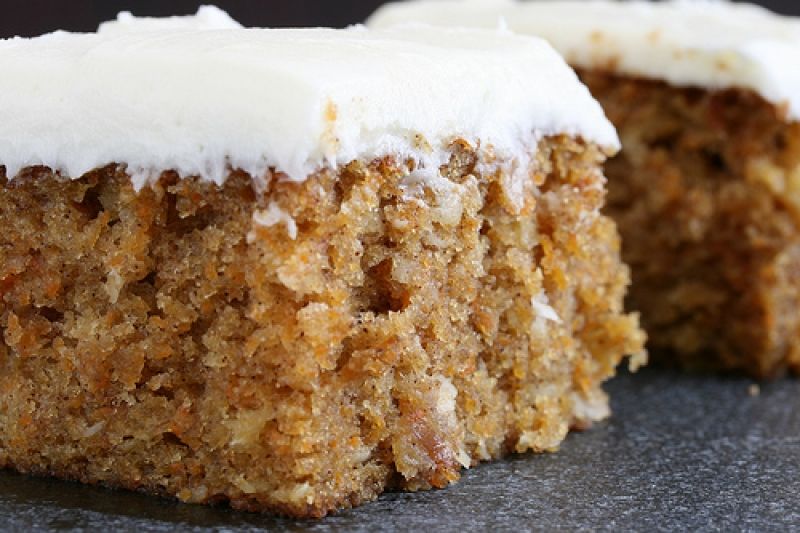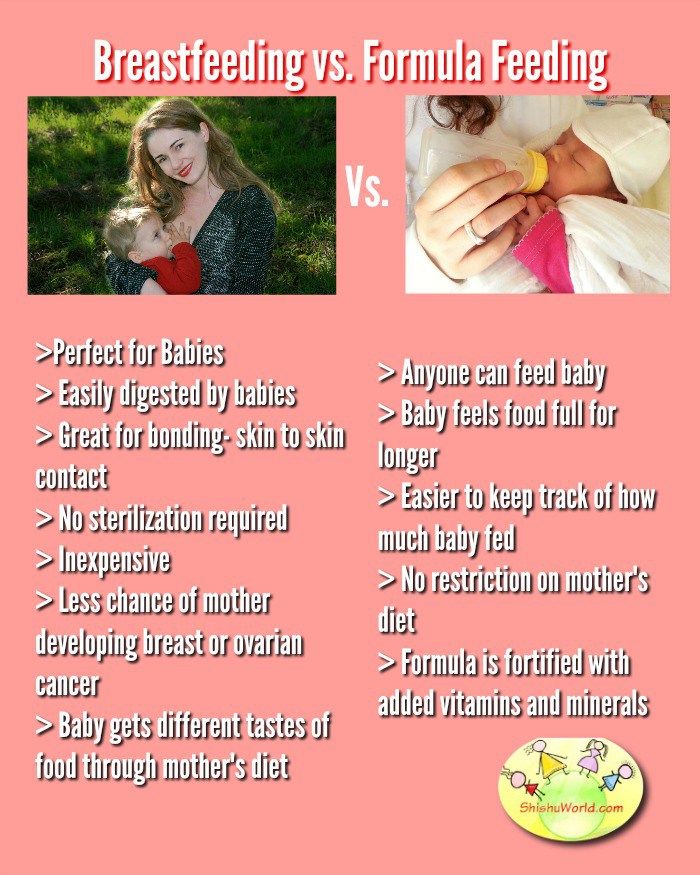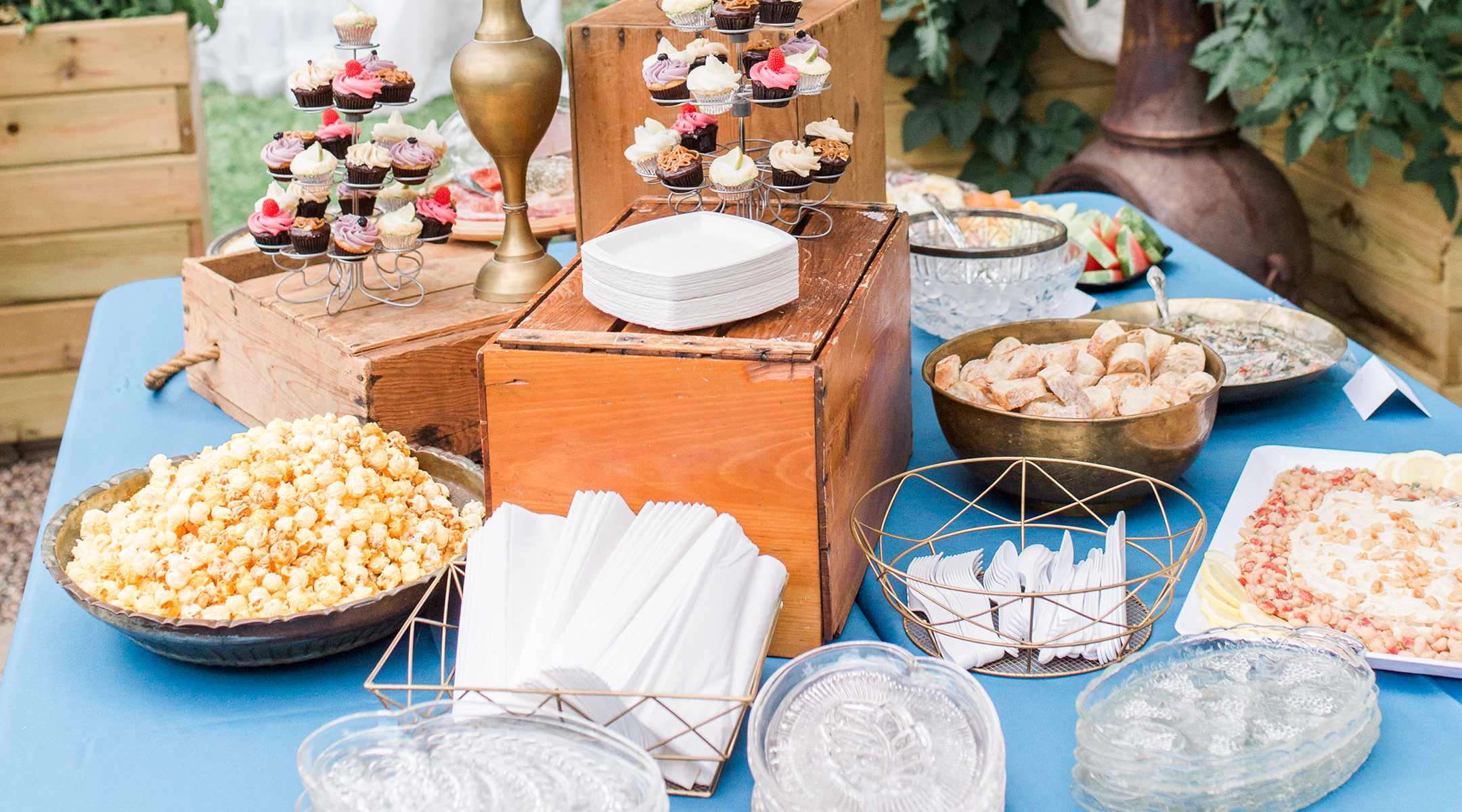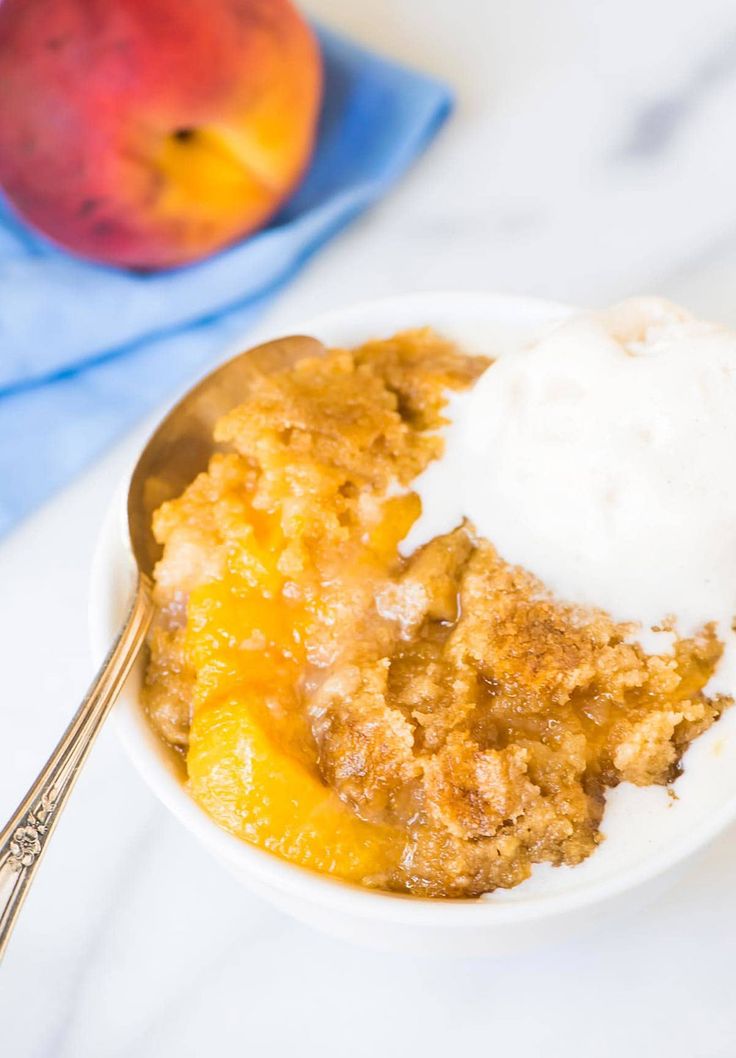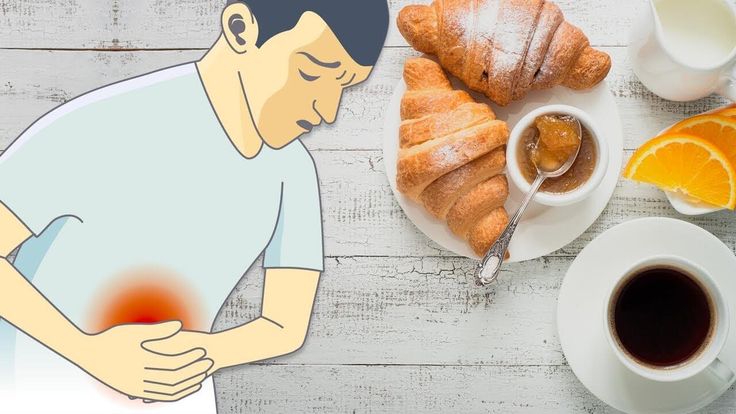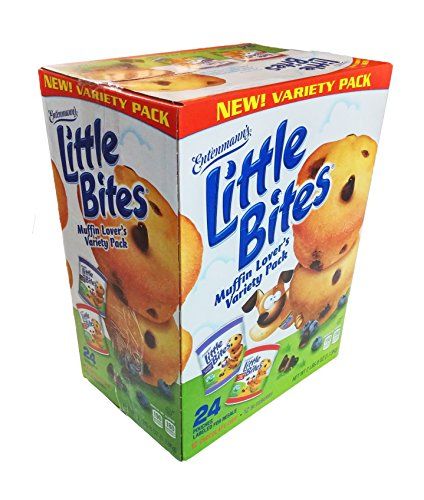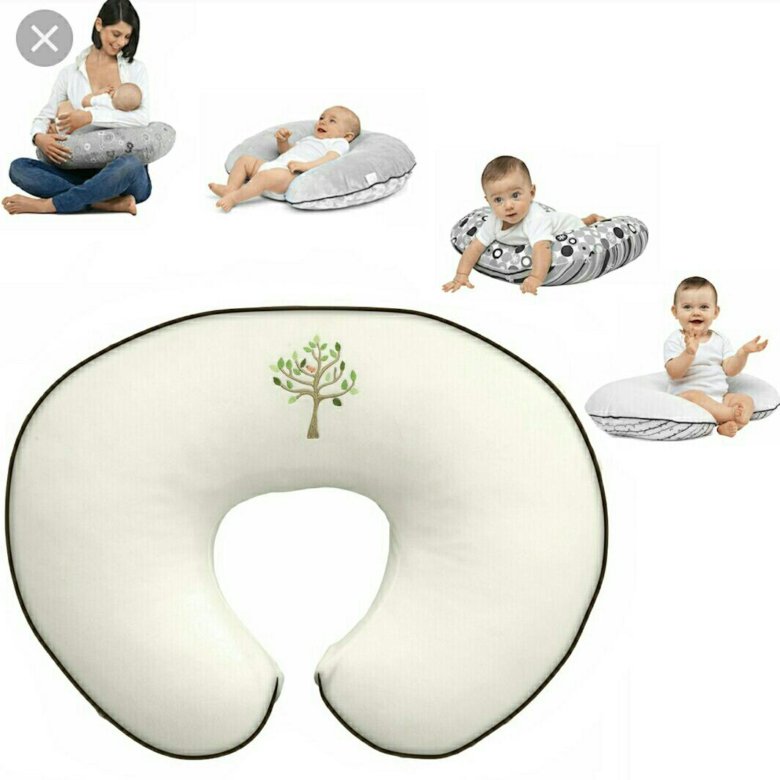How to feed a baby bird by hand
Instructions For Hand-Feeding Baby Birds
More Bird Topics ▼
The idea of a new baby bird in the family is an exciting proposition that brings a new dimension to your life. However, if you decide to hand-feed your new pet, you will need some knowlege, a lot of patience, and a good diet for a growing bird.
Veterinarians and naturalists have developed techniques for hand raising nesting birds, and
there are now easy-to-use special baby bird formulas for feeding the ever-hungry little babies.
Higgins Intune Baby Bird Hand Feeding Formula and
Higgins Intune Hi Energy Baby Macaw Hand Feeding Formula
are super foods that meet the extraordinary nutritional needs of these unusually fast
growing babies. It is rice based (sourced from North America) and corn free. inTune® Natural Hand Feeding uses natural and healthy, high end sources for nutritional fat like coconut oil and macadamia nut meal. It is also the only commercial hand feeding formula on the market with natural banana & mango aroma.
The need to cook the formula has also been eliminated. It
can now be prepared with hot water!
Most baby birds arrive in the world wet, naked, blind, and too weak to support themselves. When fallen from their nest, survival is questionable. Now, with help, they are able to grow and develop normally. Wild birds can be raised and returned to nature. Pet birds learn to accept people as friends. The real benefactors, though, are people. Nature returns many-fold for kindness performed.
Hand-Feeding
The most important considerations in the hand feeding process are the frequency
and volume of feeding. Baby birds grow at an extraordinarily rapid rate and this growth
requires a great deal of food to meet the nutritional needs of the bird. However, the crop
of a young bird holds a limited amount of food, so it must be filled frequently. As the
bird gets older, the capacity of the crop increases, and the number of daily feedings will
be reduced. The volume to be fed is base upon a combination of observation and judgement.
As the
bird gets older, the capacity of the crop increases, and the number of daily feedings will
be reduced. The volume to be fed is base upon a combination of observation and judgement.
Procedure
Check the Fullness of the Crop
Nature designed a rather unique feature into the digestive system
of birds-a widening of the oesophagus at the lower pan of the neck This
widening acts as a compartment to hold a quantity of food, and is named
the crop.
The crop can be easily visualized in young birds while feathering is incomplete. In older birds with a well developed covering of feathers, the fullness can be checked by gently feeling the crop with a thumb and index finger.
The crop should be examined before each feeding. Ideally, in the rapidly
growing young bird, the crop should never be allowed to become completely
empty. Checking the crop fullness will help determine the frequency
and volume of feeding to be given. Normally the crop will empty in 4
hours. A crop that remains full or is not emptying properly indicates
some type
of problem.
Checking the crop fullness will help determine the frequency
and volume of feeding to be given. Normally the crop will empty in 4
hours. A crop that remains full or is not emptying properly indicates
some type
of problem.
Position Bird for Hand-Feeding.
Wild birds are best fed while in a nest box. They will open their beaks and gape,
making feeding very easy. Avoid excessive handling of wild birds. Pet birds are removed
from the nest box and placed on a towel. By cupping a hand gently around the baby during
feeding , adequate support will be given to position him for eating.
Shop Avian Adventures Lifetime Cages
On Sale now. Free Shipping.
Carefully Introduce Feeding Device into the Mouth.
The introduction of an eye dropper or syringe into the mouth is
relatively easy, as the baby birds will be eager to be fed and will be gaping
(opening the beak wide in order to receive the feeding). Occasionally, a
bird may not gape, and gentle tapping of the beak with the feeding device
will encourage the bird to open its beak. The device should be carefully
passed into the left side toward the right side of the mouth.
Occasionally, a
bird may not gape, and gentle tapping of the beak with the feeding device
will encourage the bird to open its beak. The device should be carefully
passed into the left side toward the right side of the mouth.
Administration of the formula should be synchronized with swallowing. Birds swallow with an unusual rhythmic bobbing of the head up and down. While the bird is swallowing, the formula is delivered quickly. With practice, a "feet" for the procedure develops, and, done efficiently, the filling of the crop can be accomplished in a surprisingly short time.
Volume of formula to be Given
The volume of food given is of critical importance. overfilling of the crop could
lead to backflow up the oesophagus, into the throat, and down the windpipe, which could
cause death. Under-filling the crop might result in starvation.
As t he food material is being delivered, the crop will begin to fill
and bulge in the region of the lower neck. Careful observation and experience
are necessary in order
to determine when the crop is adequately filled.
Careful observation and experience
are necessary in order
to determine when the crop is adequately filled.
Frequently, the bird will stop gaping when the crop is filled; however, some birds, will continue to gape even when filled. Watch closely when filling for any evidence of food material backing up into the mouth. If this occurs, immediately stop until the mouth is cleared.
When the bird appears to have had enough feeding material, determine the state of fullness of the crop to make sure a sufficient amount of feeding was delivered.
Any excess food material on the skin, beak or feathers should he removed
with warm water when the feeding is complete. It can be followed with a
few drops of warm water to aid in "cleaning the mouth." Feeding
utensils should be cleaned immediately after use. Check the anus to be
certain no fecal matter has accumulated. Ideally, monitor the bird's weight
daily with an accurate scale. A healthy baby gains weight daily.
Ideally, monitor the bird's weight
daily with an accurate scale. A healthy baby gains weight daily.
Preparation of Baby Bird Formula
Follow the manufacturer's directions when mixing the formula.
Important: "Use distilled or boiled water to eliminate bacteria growth from contaminated tap water." The water should be approximately 105-110 degrees. Add the water to the powder gradually while stirring. After thorough mixing to eliminate lumps, the formula should be the consistency of creamy pudding. This thickness will allow it to be drawn into an eye dropper or syringe or will roll off a spoon. For older birds the mixture may be made thicker.
Do not reuse mixed formula. Discard and mix fresh at each feeding.
If really necessary, sufficient amount of formula may be prepared at one time to last 3
days if covered and refrigerated after preparation. The amount needed for each feeding can
be heated and fed but not reused. Caution: You might need to add water in the heating
process. Diluting formula by increasing water will reduce the concentration of the diet.
The amount needed for each feeding can
be heated and fed but not reused. Caution: You might need to add water in the heating
process. Diluting formula by increasing water will reduce the concentration of the diet.
Temperature to Feed Formula
The formula should be served warm- 104-106 F- but not hot, as excess
heat may damage the digestive tract. It should feel Slightly warm to the touch. It is
highly recommended to use a thermometer to measure the temperature.
In order to maintain the heat of the hand-feeding formula mixture, a double-boiler type arrangement can be set up with the container of prepared formula placed in a bowl or pan of warm water during the feeding process.
Feeding Area
Psittacine birds while being fed should be placed on a surface, such as a towel,
where there will be insulative properties to prevent excess heat loss and a surface where
they can grip with their feet, preventing slippage and possible injury.
Frequency of Feeding
Cockatiels and Small Parrots
Baby birds can be removed from their parents from between 8 to 21 days. Waiting
until 2 1/2 to 3 weeks is safer for the beginner, as the bird is hardier due to the
presence of some feathering.
Hatching to 1 week.
If the bird was removed from the nest shortly after hatching, for whatever
reason, feeding requires special care. There should be no attempts to feed the bird for at
least 12 hours after hatching. The crop is very small and will hold only a limited amount
of food. After continued use, it will expand. The first feeding at 12 hours should be one
drop of water. Approximately 1/2 to 1 hour later, another drop of water may be given.
Feeding too frequently during this period may overload the crop and lead to aspiration and
death.
After these initial feedings, if the baby appears normal and is excreting,
a few drops of very thin formula can be given. In order
that the baby bird receive enough food, the hand-feedings are repeated every two hours around the clock.
In order
that the baby bird receive enough food, the hand-feedings are repeated every two hours around the clock.
One to two weeks - Birds can be fed every 2-3 hours around the dock. If the birds are kept especially warm and comfortable, the night feedings after midnight can be eliminated. However, feedings must begin again at 6:00 AM.
Two to three weeks - This is a relatively safe age to remove the baby birds from the nest for hand-feeding. It is easier to check the crop and feed them. The birds of this age can be fed every three to four hours from 6:00 A.M. to midnight.
Three to four weeks - Feed the birds every 4 hours. As feeding frequency tapers off, the formula can be slightly thickened. At 4 weeks, the birds can be put in a cage with low perches. Water in a bowl may be placed inside.
Five to six weeks - Feed the birds twice daily. A pelleted bird food
and other foods may be placed in the cage to encourage the bird to eat on its own.
A pelleted bird food
and other foods may be placed in the cage to encourage the bird to eat on its own.
Seven weeks - Birds should be placed in a large cage with pellets in cups and scattered on the floor. Introduce the birds to a variety of succulent foods, but these should not make up more than 20% of the diet. Vegetables such as peas and corn are well accepted.
Weaning
Birds should not be weaned before 7 weeks, usually about 8 weeks. Before weaning
the bird off hand-feeding, keep close watch to see that the bird is actually eating
adequate amounts of pellets on its own and not merely nibbling at the food. Handle the
crop to determine the fullness and check the breastbone for degree of muscling. A weaning
bird may lose as much as 10% of it's weight normally. Any more than that may be an
indication of a problem. It is recommended that the bird be weighed regularly through this
period.
When first weaning the bird, give them pellets, as these are a nutritionally complete and balanced diet for the bird. It is a good idea to keep an older bird in a cage next to the cage with the young weanling to teach them to eat through mimicry.
If the baby birds are not weaned, they will become "spoiled" and will not eat on their own, preferring to be hand fed. However, if they are weaned too early, they will not eat adequately, gradually lose weight, become weak and die. Therefore, if baby birds are begging to be fed, even after they are weaned, there may need to be a reversal back to hand-feeding as they may not be eating adequately.
FREQUENCY OF HAND-FEEDING COCKATIELS and SMALL PARROTS
| Age in Weeks | Number of Daily Feedings |
0 |
Every 2 Hours (Around the Clock) |
| 1 | Every 2 Hours (Around the Clock*) |
| 2 | Every 3 Hours (6 a. m. to Midnight) m. to Midnight) |
3 |
"Safest" Period To Begin Hand Feeding Every 4 Hours (6 a.m. to Midnight) |
| 4 | Every 5 Hours (6 a.m. to Midnight) |
| 5 to 7 | Two Feedings Daily |
*If bird is kept especially warm and comfortable, the 2 a.m. and 4 a.m. feedings can be eliminated.
Weaning Period - Important -
Make sure bird is eating adequately on its own before discontinuing hand-feeding. Check
fullness of crop.
Housing and Heat
A small cardboard box approximately 12" x12"xl2" or a small fish
aquarium with layers of paper towels over a one inch padding of cloth towelling on the
bottom will serve as an incubator and holding area while the babies are young. A heating
pad is placed under 1/2 of the box or aquarium. A towel is placed over the top. Either the
heating pad setting or the amount of the top that is covered by the towel may be adjusted
to provide a constant 85-90' for non-feathered birds. The temperature is gradually reduced
as they become feathered and mature. It is recommended to observe the babies carefully to
determine their comfort level. A cold baby will shiver and a baby that is too hot will not
sleep well and will breathe heavily through an open mouth. A bottle or tin filled with
water and holes punched in the lid to allow for evaporation will help to provide humidity.
A heating
pad is placed under 1/2 of the box or aquarium. A towel is placed over the top. Either the
heating pad setting or the amount of the top that is covered by the towel may be adjusted
to provide a constant 85-90' for non-feathered birds. The temperature is gradually reduced
as they become feathered and mature. It is recommended to observe the babies carefully to
determine their comfort level. A cold baby will shiver and a baby that is too hot will not
sleep well and will breathe heavily through an open mouth. A bottle or tin filled with
water and holes punched in the lid to allow for evaporation will help to provide humidity.
WILD BIRDS
Frequency of Feeding
The frequency and volume of feedings given to baby birds are largely determined
by their age. Judging the age of wild birds is difficult if untrained, so the best way to
determine feeding requirements is through the use of readily observable changes in the
bird. For example, whether or not the eyes are open, and if the bird is standing up
"off their hocks."
For example, whether or not the eyes are open, and if the bird is standing up
"off their hocks."
Before the eyes are open
If the baby birds appear strong and are peeping with their mouths gaping open,
then they can eat as much as they want. Ideally, baby birds of this young age should be
fed every 15-20 minutes until their eyes are open. They can go up to 30 minutes without a
feeding with no ill effects; however, more frequent feedings are preferred. They do not
require around-the-dock feeding as in nature, they are fed only during daylight hours. In
accordance with this, they are given feedings for a 12 hour period. Nonetheless,
hand-feeding wild birds is quite a commitment, as it requires nearly 50 feedings per day.
When the eyes are open
As the bird becomes older, the frequency of hand-feeding can be reduced and the
volume increased. Efforts can be initiated to get the bird to eat on its own. When a bird
initially opens its eyes, it can be fed every half hour unless hungry or peeping.
When a bird
initially opens its eyes, it can be fed every half hour unless hungry or peeping.
When birds are "off their hocks"
When birds become stronger and begin to stand on their legs ("off their
hocks'), then feedings can be given every 45 minutes. Time between feedings can steadily
increased, and when the bird is out of the nest, feedings can be given at 2 hour
intervals.
FREQUENCY OF HAND-FEEDING FOR WILD BIRDS
| Age | Number of Daily Feedings |
Before Eyes Are Open: |
Feed Bird Every 15 Minutes (12 Hour Period) |
| Eyes Are Open: | Feed Bird Every 30 Minutes (12 Hour Period) |
| Off Their Hocks | Feed Bird Every 45 Minutes (12 Hour Period) |
| Bird Out Of Nest: (Standing On Their Own) |
Feed Bird Every 2 Hours (12 Hour Period) |
*Wean at 15 Days
IMPORTANT-Bird must be eating adequately on its own.
Weaning
Wild birds should begin showing interest in their surroundings and start to eat
on their own by 15 days. Provide live food (meal worms) and grass, twigs, etc. in the nest
to stimulate interest in the environment. Spreading seed on the bottom of the nest will
also encourage the bird to eat on its own.
During the weaning period, it is critical to keep a close watch on the bird in order that good nutrition is maintained. Many times, a bird may be pecking at seed, giving the impression that it is eating, when in actuality, it is not taking in enough for maintenance. Therefore, it is very important to observe if the bird is eating seed during this period and regularly check the crop for fullness.
If other young birds who are eating on their own are present, placing
the baby bird in the same cage will hasten socialization, and the bird
will
learn to eat on its own through the
imitation of others.
Housing For Wild Baby Birds
Following nature's design, a nest is constructed. The sides are formed from cloth
rolled to a diameter of 1 1/2 inches and then forming a circular shape like a doughnut.
The nest would have a diameter of 4-8 inches, depending upon the number and size of
the babies. The 1 1/2' height makes the sides of the nest sufficiently high to keep the
babies in the nest, but low enough to allow the baby bird to scoot backwards and pass his
waste over the side of the nest.
Paper towels are placed in the bottom of the nest to a depth of 1/2 inch and then placed over the top of the entire nest. The towels are arranged to form a sloping surface which enables the bird to back up to the top of the nest to eliminate, and the paper towels can be easily replaced to maintain cleanliness.
Heat and Humidity
To provide heat in the nest box, a heating pad can be placed under half of the
nest and dialed to a setting which will maintain temperature of 85-90 degrees for non
feathered birds and gradually reduced as they become feathered. By placing heat under half
the nest, the bird is able to select the area where the temperature is most comfortable.
The box should be kept covered. A bottle or tin filled with water and holes punched in the
lid to allow for evaporation will help to provide proper humidity.
By placing heat under half
the nest, the bird is able to select the area where the temperature is most comfortable.
The box should be kept covered. A bottle or tin filled with water and holes punched in the
lid to allow for evaporation will help to provide proper humidity.
Caution
While raising wild birds is rewarding, please, do not make a wild bird a pet. For
more information contact your local Wildlife Agency, local Rehabilitation Center, Humane
Society, State Fish and Game Agency or the Federal United States Fish and Wildlife
Service.
Weaning Pet Birds With Avi-Cakes Food
Your pet birds have received a good start in life through the nutritional
benefits of Nutri- Start baby bird food. It is important to continue with high-quality
nutrition during the weaning stage and beyond. Lafeber's Avi-Cakes are an excellent
weaning food for your birds.
When birds reach the weaning stage, simply break Avi-Cakes into small
pieces and spread them near the babies. They will first investigate
the food; then, pick it up and start
self-feeding. (Supply fresh Avi-Cakes daily.) When the babies are eating
the Avi-Cakes you will first want to eliminate the middle of the day
hand-fed meal. As the birds continue
eating on their own, discontinue the morning and finally the evening hand-fed
meal.
They will first investigate
the food; then, pick it up and start
self-feeding. (Supply fresh Avi-Cakes daily.) When the babies are eating
the Avi-Cakes you will first want to eliminate the middle of the day
hand-fed meal. As the birds continue
eating on their own, discontinue the morning and finally the evening hand-fed
meal.
Since Avi-Cakes provide complete nutrition for pet birds, you may continue feeding Avi-Cakes or you may choose one of the other fine quality foods manufactured by Lafeber Company.
This bit of information was brought to you by Lafeber Bird Foods
feeding-baby-birds | VCA Animal Hospital
General Information
Hand-feeding baby birds is only a substitute for parents raising birds, but it does have certain advantages. Hand-raised baby birds usually make better pets, as they have been completely socialized with humans. Hand-raised babies grow up with less fear of humans or other potential dangers such as cats, dogs and young children. Hand-feeding is a huge responsibility and requires time, patience, and commitment. Hand-fed baby birds are entirely reliant on you for everything. Hand-feeding is a job best left for the experienced bird breeder or aviculturist. If you’re considering hand-feeding a baby bird, you should contact your local bird breeder or veterinarian for help. This handout is designed to provide some basic guidelines on how to hand-feed.
Hand-raised babies grow up with less fear of humans or other potential dangers such as cats, dogs and young children. Hand-feeding is a huge responsibility and requires time, patience, and commitment. Hand-fed baby birds are entirely reliant on you for everything. Hand-feeding is a job best left for the experienced bird breeder or aviculturist. If you’re considering hand-feeding a baby bird, you should contact your local bird breeder or veterinarian for help. This handout is designed to provide some basic guidelines on how to hand-feed.
When do I start hand-feeding a baby bird?
A chick may be removed from its parents any time before weaning, but many suggest leaving the babies with the parents for up to 3 weeks. Older birds may prove to be more challenging in their acceptance of hand-feeding.
Where do I keep a baby bird?
Precise temperature and humidity is essential for optimum growth of newly hatched birds. Initially, relative humidity greater than 50% is required.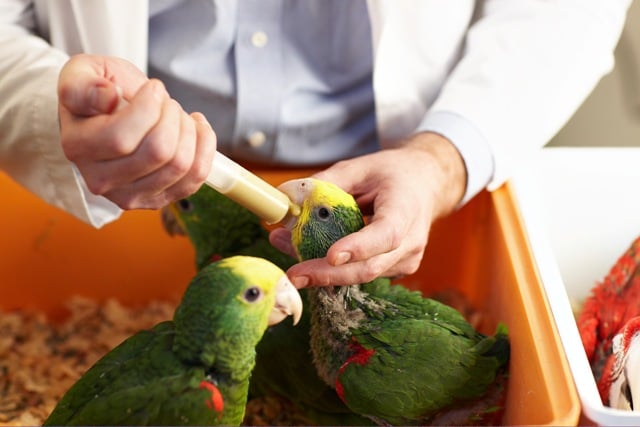 Hatchlings (without feathers) should be maintained at 95°-97°F (35°-36°C). As the chick gets older and develops feathers, it has a greater tolerance for temperature fluctuations.
Hatchlings (without feathers) should be maintained at 95°-97°F (35°-36°C). As the chick gets older and develops feathers, it has a greater tolerance for temperature fluctuations.
Generally, the temperature can be lowered by one degree every 2-3 days as feathering progresses. Chicks with new feathers (pinfeathers) should be fine at 75°-85°F (24°-30°C) depending on the development of the feathers. Fully feathered and weaned chicks can be maintained at room temperature. If you are raising a chick, always monitor your bird for signs of overheating or chilling. Wings extended or drooping, and panting indicate overheating. Shivering and cuddling of chicks together indicate that they’re cold.
Poor growth or poor digestion (delayed crop emptying) may indicate poor health (including presence of gastrointestinal tract infections), improper consistency/mixing of hand feeding formula, improper temperature of formula, or improper environmental temperature and humidity. Good quality brooders are available that carefully regulate air circulation, temperature, and humidity. Paper towel, diapers, hand towels, or other soft, disposable products can be used to line the bottom of the brooder and provide secure, clean, dry footing for birds. The bottom liner must be changed frequently to keep birds clean. If the bottom texture is too smooth, chicks’ legs may splay out sideways, leading to permanent deformities. The brooder should be carefully checked to ensure that it does not contain anything for birds to get their wings or legs stuck on or that might cause injury or deformities.
Paper towel, diapers, hand towels, or other soft, disposable products can be used to line the bottom of the brooder and provide secure, clean, dry footing for birds. The bottom liner must be changed frequently to keep birds clean. If the bottom texture is too smooth, chicks’ legs may splay out sideways, leading to permanent deformities. The brooder should be carefully checked to ensure that it does not contain anything for birds to get their wings or legs stuck on or that might cause injury or deformities.
What should I feed my bird?
There are numerous commercially available hand-feeding formulas for baby birds. You should choose one formula and use it until the baby is weaned. Changes in diet may be stressful on the baby's digestion. Be sure to discuss dietary choices with your veterinarian, an experienced bird breeder, or an aviculturist.
How do I feed my baby bird?
All food must be prepared fresh for every feeding. Food retained from one feeding to another is an ideal medium for the growth of harmful bacteria and yeast. Any food prepared or heated in a microwave oven must be mixed thoroughly to ensure that the food’s temperature is uniform and that there are no hot or cold spots. Food temperature should be at 102°-106°F (39°-41°C) throughout the mixture and should be measured with a thermometer. Food that is too hot may cause severe burns to the crop.
Any food prepared or heated in a microwave oven must be mixed thoroughly to ensure that the food’s temperature is uniform and that there are no hot or cold spots. Food temperature should be at 102°-106°F (39°-41°C) throughout the mixture and should be measured with a thermometer. Food that is too hot may cause severe burns to the crop.
Food that is too cold may be rejected by baby birds and may slow down digestion. Hand-feeding formulas have specific directions on the packaging and explain how they should be mixed.
In general, the younger the bird, the thinner the mixture should be. A day-old chick requires a more dilute mixture (90% water), as it is still utilizing the yolk sac as a source of nutrition. Chicks older than one or two days, should have food containing approximately 70-75% liquid.
"All food must be prepared fresh for every feeding."
Syringes are probably the preferred feeding tool, but some bird owners still prefer a spoon with the sides bent up and inward. Accurate feeding volumes can be recorded with the syringe. Charting daily feedings is important. The natural feeding response of a baby bird is to rapidly bob the head in an up and down motion. This action can be stimulated with gentle finger pressure at the corners of the mouth. During this head bobbing, the trachea is closed and large amounts of food can be given relatively quickly.
Accurate feeding volumes can be recorded with the syringe. Charting daily feedings is important. The natural feeding response of a baby bird is to rapidly bob the head in an up and down motion. This action can be stimulated with gentle finger pressure at the corners of the mouth. During this head bobbing, the trachea is closed and large amounts of food can be given relatively quickly.
If the bird is not displaying a strong feeding response, do not attempt to feed as there is an increased chance of aspiration of food into the trachea and lungs which can lead to death. The best time to feed is when the crop is empty. When full, the crop, which is the sac that hangs over the front of the chest at the base of the neck, will be visibly distended.
How often and how much do I feed?
The amount and frequency of feeding depends on the age of the bird and the formula fed. The frequency of feeding for young birds is greater than that of older birds. The following are general guidelines. With newly hatched chicks, the yolk sac is the source of nutrients for the first 12-24 hours post-hatching. Chicks less than one week old should be fed 6-10 times per day (every 2-3 hours).
With newly hatched chicks, the yolk sac is the source of nutrients for the first 12-24 hours post-hatching. Chicks less than one week old should be fed 6-10 times per day (every 2-3 hours).
During the first week of life, some birds benefit from feeding during the night. Chicks that have not yet opened their eyes may take 5-6 feedings per day (every 3-4 hours). Once birds’ eyes open, they can have 3-5 feedings (one every 5 hours). As their feathers start to grow in, they may be fed 2-3 times per day (every 6 hours). Their crops should appear full when they’re done.
Feeding between 10:00 p.m. and 6:00 a.m. is not necessary at that point when birds are sleeping. The best indication of a healthy, growing chick is a good, strong feeding response at every feeding, with the crop emptying between feedings, and the regular production of droppings (feces). Weight gain should be monitored and recorded at the same time each day using a scale that weighs in grams with 1-gram increments to detect subtle increases or decreases. Birds’ weights may fluctuate up and down daily but should trend upward over a period of days to weeks. Birds that are not gaining weight should be checked by a veterinarian as soon as possible.
Birds’ weights may fluctuate up and down daily but should trend upward over a period of days to weeks. Birds that are not gaining weight should be checked by a veterinarian as soon as possible.
When should birds be weaned off hand-feeding formula?
Deciding when to wean a bird off of formula is often a difficult decision for both the bird owner and the bird. As a bird gets older and develops a full complement of feathers, it should be encouraged to wean off formula and to eat more on its own. Some babies start weaning themselves by refusing certain feedings.
Birds should be offered a variety of foods including formulated pelleted diets as well as fresh fruits and vegetables to encourage exploration and experimentation. As food introduction continues, hand-feeding may be withheld at certain times, often starting with the mid-day feedings. As time goes on, the morning feeding may be withheld and ultimately the evening feeding. Some birds learn quicker to eat on their own by watching other birds or older babies eat.
Should I be concerned about disinfection?
Baby birds have poorly developed immune systems and are more susceptible to developing infections. The brooder should be disinfected regularly. All feeding utensils must be cleaned, disinfected, and dried thoroughly between feedings. Using separate feeding utensils for every individual bird is recommended.
How do I know if something is wrong?
If you suspect something is wrong with your bird, you should immediately contact your veterinarian. Signs to watch for include:
- Chirping or crying all the time
- Fussing a lot and not sleeping
- Listless, droopy wings or head
- Not accepting food
- Lack of feeding response
- Slow or lack of crop emptying
- Poor weight gain
- Slow growth
- Abnormal posturing or abnormal wing and/or leg positions
- Abnormal or lack of droppings
- Wetness or food on skin over the crop (indicating a possible burn)
How to feed a chick that has fallen out of the nest
Tying materials (7)
1
Happiness fell on your head?
2
How not to harm?
3
How to create all conditions for survival?
4
Where to settle?
5
What difficulties will you face?
6
How to feed a chick?
7
Chick formula recipe
Happiness fell on your head?
Have you suddenly found a chick that has fallen out of the nest in the dacha, near the house or even on the balcony? Is there anything you can do to help this kid? Or is he already doomed? Help the chick, most often you can.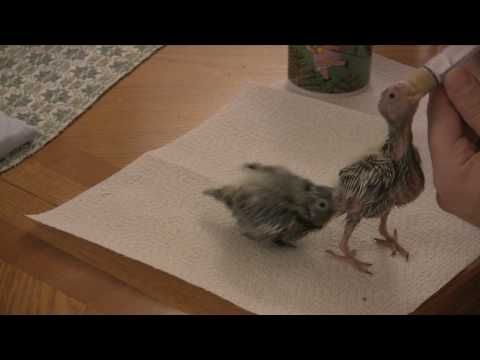 And we will tell you how to do it.
And we will tell you how to do it.
How not to harm?
When you find a chick that has fallen out of the nest, do not rush to grab it in your hands. Perhaps there is a chance to return the baby to the nest. But if you take it with "bare" hands, your parents will not accept it back.
Pay attention to how the chick looks. If he is active, mobile and he already has feathers, then most likely you have the so-called “fledgling”. And if you find a fledgling in the park, in the garden, in the country - where he can hide and predators will not find him, then just do not touch. Parents continue to feed the fledglings! He will not be abandoned, he will simply hide, and he will be fed in the same way as the chicks left in the nest. The chick's parents have a much better chance of saving the chick than you.
If you see a nest from which the baby has fallen out, you can carefully take the chick with a handkerchief and put it back into the nest.
If you didn't find the nest, the chick is very small and leaving it where it is found is very dangerous, you will have to take it with you. For such cases - our following instructions.
For such cases - our following instructions.
How to create all conditions for survival?
There are two main factors that determine whether your chick will survive or not. The first factor is age. Chicks under the age of 4 - 5 days, having fallen out of the nest, almost never survive. Do you know how old the chick is? If the baby is still “naked”, without plumage, then he is definitely not yet 8-12 days old. It is very simple to calculate: if at the time of falling out of the nest the chick was 5 days old, then by the 8th day it should already have feathers. It is at the age of 8 - 12 days that the chicks are called "fledglings" - during this period they are very active and often fall out.
The second circumstance is metabolism. Chicks have an incredibly active metabolism. Left without food during daylight hours for 3-4 hours, they literally burn their internal resources. That is, if the baby was on the ground without food before you found him for more than 3 hours, his metabolism is probably already disturbed. You can start feeding him and he will look like everything is fine. But the metabolic disorder will not “pass away”, irreversible processes are already underway inside the small organism, and within 3 days (maximum) the chick will die quite suddenly.
You can start feeding him and he will look like everything is fine. But the metabolic disorder will not “pass away”, irreversible processes are already underway inside the small organism, and within 3 days (maximum) the chick will die quite suddenly.
The main conclusion is that the critical period is 3 days. If within 3 days the chick suddenly dies - it's not your fault, and you really could not do anything. It's all about age and metabolism. If the baby has lived with you for more than 3 days, then everything depends only on your efforts. This is especially important if the bird was picked up by children. Explain to them right away that during the first 3 days you should not give the chick a name and place high hopes on its survival.
Where to settle?
Place the chick in a box lined with a soft, lint-free cloth or dry grass. Do not keep the box in the open sun or in a draft. Keeping a box on the floor is a bad idea. If it's cold outside, place a plastic bottle of warm water under the fabric.
What difficulties will you face?
Deciding to take a chick and feed it, you take responsibility for its life and a huge number of worries. Firstly, the chick squeaks almost all the time during daylight hours. Secondly, the chick needs to be fed every 20 minutes. And don't just give him food. And feed enough. When the chick is full, he stops opening his mouth. When hungry, it stretches its neck and opens its huge mouth.
As soon as the chick has eaten, it begins to move backwards. The reflex makes him go all the way to the edge of the nest to stick his butt out and poop. Usually, adult birds pick up the "capsule" and carry it away from the nest. If the nest is soiled with droppings, predators will quickly find it by smell.
By the way, by the litter you can tell if you feed the chick too often. If too often, a protein film - a shell - does not have time to form on the litter. If the litter spreads, and does not resemble a capsule, it is time to feed the bird less often.
How to feed a chick?
Birds feed their young mainly on insects. So, if you have somewhere in the far corner of the kitchen cabinet a bag of cereals in which moths are wound up, the chick is lucky. For the first time, you are provided with worms. Meal worms, ant cocoons, fly larvae are also suitable.
Older chicks can be given boiled egg yolk, cottage cheese and carrots. The yolk should be grated on a fine grater, the cottage cheese should be washed in a sieve under running water, the carrots should be grated on a fine grater. Don't forget about vitamins and minerals. Remember: only insects can feed a chick. Only "regular" products without additives - no.
Food can be given with tweezers. Touch his head, wait for the chick to open its mouth, give it food. The younger the chick, the easier it is to develop a reflex for begging for food. At an older age, he will begin to hide from you with tweezers, and then generally run away. This is fine. Fledgling you will most likely have to force-feed the first few times.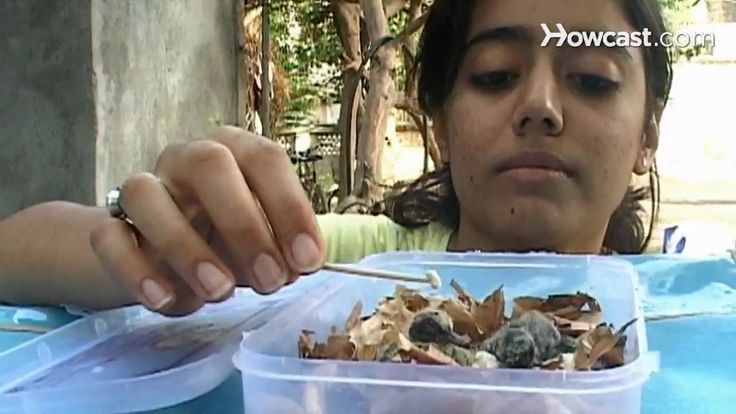 Gradually, the baby will learn to fill up. And when he learns to eat on his own, you will need to buy a more spacious cage, on which you can run and fly.
Gradually, the baby will learn to fill up. And when he learns to eat on his own, you will need to buy a more spacious cage, on which you can run and fly.
Don't forget to water the chick after each pipetting. 1-2 drops will be enough.
Chick formula
1 carrot, peeled and grated. Squeeze out the juice as much as possible. Grate the boiled egg on a fine grater and add to the carrots. Disassemble the boiled chicken breast into small fibers. Add very finely chopped greens (not spices!!!) salad or dandelion leaves. Add non-acidic and non-greasy cottage cheese washed in running water. Add 2 tbsp. l . crumbly millet porridge without salt butter. Add 1 hr. l . dry food for fish (gammarus or daphnia). Add calcium glycerophosphate (at the rate of 1 tablet per liter of the finished mixture), as well as 1 ⁄ 2 tsp. l . ground eggshell. The mixture should be crumbly, it should not stick to your fingers.
Categories
Auto
Business services, finance
Household appliances, electronics, telephones, gadgets
City services, housing and communal services, authorities
Summer cottage, garden, kitchen garden
Decor, home goods, household goods
Zoomir
Internet, communication, telephony
Internet shops
Computers, office equipment, information technology
Shops, shopping centers, markets
Furniture
Medicine, health
Real Estate
Equipment
Education
Wholesale depots, warehouses
Organizations and representations
Security, safety, protection
Holiday services
Food, drinks
Industry
Work
Advertising, printing
Service centers, repair shops
media
Building materials
Construction services
Construction (production)
Transport, taxi, transportation
Goods for sports, outdoor activities, tourism
Services
Shopping
Show business, creativity
Esoteric, astrology
Legal services
Restaurants, cafes, pizzerias, sushi, food delivery
Beauty salons, solariums, saunas, SPA
Active recreation, extreme
Miscellaneous
Helping to sort it out
Leisure and travel
ShowHow to save a chick that has fallen out of the nest | Encyclopedia of Animals
With the advent of warm weather, our forests and gardens are filled with bird songs, and people, in turn, try to spend as much time as possible outdoors. During outdoor recreation, helpless chicks are often found. Naturally, there is a desire to save the life of a baby, but not everyone knows how to save a chick that has fallen out of the nest. Let's see how we can help him.
During outdoor recreation, helpless chicks are often found. Naturally, there is a desire to save the life of a baby, but not everyone knows how to save a chick that has fallen out of the nest. Let's see how we can help him.
To save or not to save - that is the question
The first thought that arises when looking at a fledgling and flightless chick is “fell out of the nest”, “lost” and even “parents abandoned and forgot”. In fact, the chick is alone, no brothers, sisters, or adult birds are visible nearby, and it also screams loudly. How can you help here? But the fact of the matter is that help in 95% of cases in such situations is not needed.
The fact is that in many birds (primarily small passerines) chicks leave the nest as half-fledged fledglings. During this period of life, they still do not know how to fly, but they are already actively exploring the surrounding space - they climb branches, clumsily flit. It is these rather active chicks that fall into the field of human vision. It is easy to determine the fledgling in appearance: it is feathered or covered with rudiments of unopened feathers; the chick is quite large (about 50-70% of the size of a sparrow), it is often active, that is, it opens its mouth and asks for food. Parents did not abandon this chick, but simply flew away for food. Of course, while you are standing next to the chick, they will not make themselves felt. And if you stay too long, then there is a chance that the parents will leave him out of concern.
It is easy to determine the fledgling in appearance: it is feathered or covered with rudiments of unopened feathers; the chick is quite large (about 50-70% of the size of a sparrow), it is often active, that is, it opens its mouth and asks for food. Parents did not abandon this chick, but simply flew away for food. Of course, while you are standing next to the chick, they will not make themselves felt. And if you stay too long, then there is a chance that the parents will leave him out of concern.
Even if the chick looks too small and helpless, don't rush to classify it as an orphan. Birds such as warblers, warblers, larks, wagtails nest on the ground, their chicks spend their entire childhood on the grass. Your presence in this situation is also undesirable because magpies and crows track human behavior. Smart birds can check after you leave what you saw there, find and kill the chick. Hence the conclusion: do not "save" everything that catches your eye. If the chick is dry, warm, active, well feathered, then he does not need help.
What if the situation causes concern? Perhaps the chick is too weak or obviously fell out of the nest from a great height and cannot be returned to its parents. In this case, you can try to save him, but keep in mind that the likelihood of success will be directly proportional to your diligence, and you will have to put in a lot of work.
What to do first
- Quickly and carefully inspect the place where you found the chick, remember how it looks. In some cases, this will help determine the type of bird.
- Pick up the chick (don't squeeze too hard!) and bring him home as soon as possible.
- On the way, inspect the chick for damage. If the bird has clearly visible fractures of the paws, wings, concussion (how to define it a little lower), then you can’t do without a veterinarian. It is highly desirable to seek help from a veterinarian who specializes specifically in the treatment of birds (unfortunately, such specialists are extremely rare).
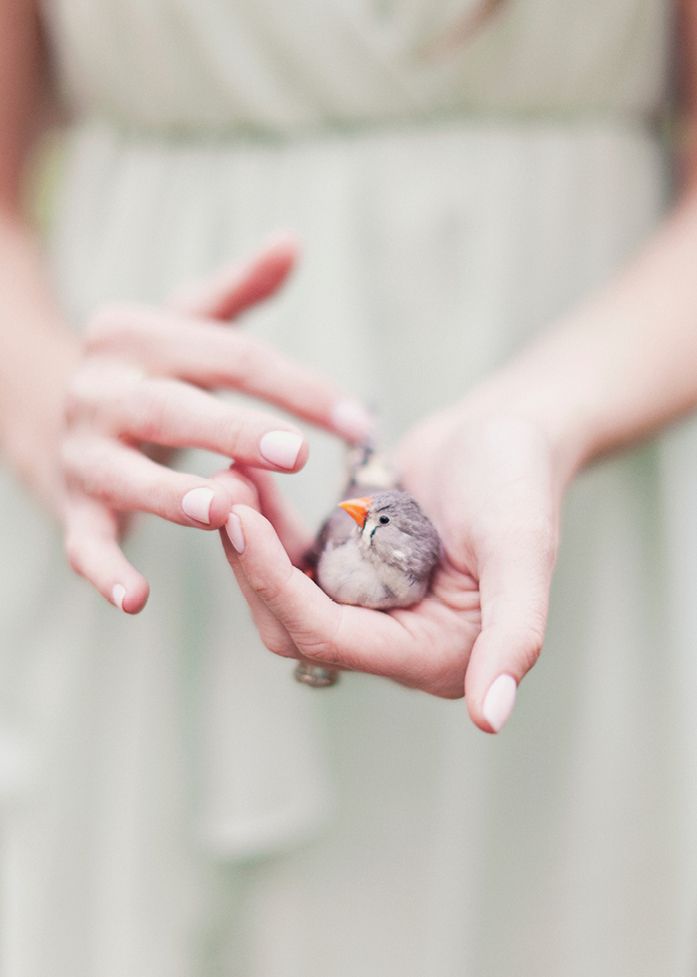 If there are no obvious signs of a fracture, and the general condition of the chick is satisfactory, then it is better not to torment him, but simply to provide good conditions - nature will do its job and he will recover.
If there are no obvious signs of a fracture, and the general condition of the chick is satisfactory, then it is better not to torment him, but simply to provide good conditions - nature will do its job and he will recover. - Providing the chick with food as soon as possible is even more important than furnishing a home for it.
Now a few words on how to define shell shock. Usually, chicks get severe bruises either from hitting the ground or when they collide with cars. At the same time, the bird has no wounds on the outside, but a concussion is observed. True signs of this condition are bleeding from the nostrils, paralysis of both legs or paralysis of half of the body (paw and wing on one side), closure of one eye, or unequal degree of pupil dilation on the injured and healthy side of the body.
What to feed
You may think that feeding a chick is easy - crumble bread and crumble. But here you will find disappointment number 2. Chicks do not eat bread, crackers, porridge, cereals, seeds. They don't eat at all. Even the chicks of granivorous birds do not take dry food at first. And the reason is that the growing organism needs proteins, therefore, in nature, even granivorous birds feed their offspring with animal food and exceptionally soft food. You will have to do the same. Pigeons are the only exception. They feed the chicks with goiter secretions - bird's milk, and then with semi-digested grains. If you picked up a pigeon chick, then you can feed it with unsalted porridge, gradually reducing the degree of cooking. In other cases, the best food for the chick is mealworms, cockroaches, crickets, darkling larvae - zoophobus (all these foods are sold in pet stores), earthworms (you can dig up), caterpillars (you will have to collect), a boiled egg (only as an additional food, and not a substitute for anything and everything). Even if you have provided the chick with the listed food, it is recommended to periodically catch bugs, grasshoppers, butterflies, flies, mosquitoes and give these insects to him, because the more varied the diet, the healthier your ward will grow.
Chicks do not eat bread, crackers, porridge, cereals, seeds. They don't eat at all. Even the chicks of granivorous birds do not take dry food at first. And the reason is that the growing organism needs proteins, therefore, in nature, even granivorous birds feed their offspring with animal food and exceptionally soft food. You will have to do the same. Pigeons are the only exception. They feed the chicks with goiter secretions - bird's milk, and then with semi-digested grains. If you picked up a pigeon chick, then you can feed it with unsalted porridge, gradually reducing the degree of cooking. In other cases, the best food for the chick is mealworms, cockroaches, crickets, darkling larvae - zoophobus (all these foods are sold in pet stores), earthworms (you can dig up), caterpillars (you will have to collect), a boiled egg (only as an additional food, and not a substitute for anything and everything). Even if you have provided the chick with the listed food, it is recommended to periodically catch bugs, grasshoppers, butterflies, flies, mosquitoes and give these insects to him, because the more varied the diet, the healthier your ward will grow. Very weak chicks should be given glucose-sweetened water (not sugar syrup!), instead of solid food, for the first few hours.
Very weak chicks should be given glucose-sweetened water (not sugar syrup!), instead of solid food, for the first few hours.
What not to feed the chicks
- dead insects - no matter what species they belong to and wherever you find them. In nature, insects almost never live to old age, rather someone will eat them. If you find a dead cockroach behind the stove or a dead locust in the garden, do not rush to rejoice. Most likely, this individual died from an insecticide, which means that the poison from the feed can enter the body of the chick and greatly harm its already poor health;
- Colorado potato beetles - adults, larvae and eggs are poisonous in this species. They are not eaten by any species of birds, so this easily accessible resource will have to be forgotten;
- ladybugs - they secrete a moderately toxic liquid, in nature a bird that has caught such a bug by mistake will spit it out.
 In captivity, especially in the case of force-feeding the chick, he does not have the opportunity to refuse harmful food, so he can get poisoned;
In captivity, especially in the case of force-feeding the chick, he does not have the opportunity to refuse harmful food, so he can get poisoned; - hairy caterpillars - firstly, they can be poisonous, and secondly, the villi during feeding can clog the chick's goiter and it will die. Although cuckoos and orioles can eat in the temperate hairy strip, it is still better to play it safe and not use this food;
- brightly colored bugs - in nature, many birds willingly peck at such insects, but this mainly concerns nondescript turtle bugs. The back of the bug, decorated with bright spots or stripes, is of a warning nature - "do not eat me, it will be worse for you." For safety net, it is not necessary to catch such specimens for the chick.
How to feed
The main thing you should know from the very beginning is that birds have a very high metabolism, and small chicks have a huge metabolic rate. Any food eaten by the chicks is digested very quickly and they need to be fed again and again. In nature, parents jointly feed the brood 100-500 times a day! This means that every 10-15 minutes the chick needs to be fed. And don't expect to overtrain him! A chick deprived of food instantly weakens, a couple of hours of hunger is enough for it to die. You will have to provide the baby with constant supervision, feed him at first every 15 minutes, and when he grows up a little, after 20-30. But you need to take a break at night, but start the first feeding no later than 6 o'clock in the morning! Evening feeding is completed around sunset, that is, around 22.00.
Any food eaten by the chicks is digested very quickly and they need to be fed again and again. In nature, parents jointly feed the brood 100-500 times a day! This means that every 10-15 minutes the chick needs to be fed. And don't expect to overtrain him! A chick deprived of food instantly weakens, a couple of hours of hunger is enough for it to die. You will have to provide the baby with constant supervision, feed him at first every 15 minutes, and when he grows up a little, after 20-30. But you need to take a break at night, but start the first feeding no later than 6 o'clock in the morning! Evening feeding is completed around sunset, that is, around 22.00.
It is more convenient to bring food with tweezers. In general, tactile contact should be kept to a minimum, frequent touching is stressful for the tiny creature, and it worsens the condition of down and feathers. If the chick is very small and naked, then it is not necessary to give it a whole large insects. In this case, it is better to cut them with tweezers and feed them in pieces. It is also recommended to remove hard elytra from large beetles, long legs from grasshoppers and locusts. Often the chicks refuse to take any food. This happens because they do not recognize you as their mother, or they are so weak that they have lost their appetite. In this case, you will have to force-feed the ward. To do this, you need to crush the food and fill it with a syringe without a needle (you can add a couple of drops of water to dilute the mixture). Take the bird in your left hand and gently spread its beak with your fingers, insert a syringe into its mouth with your right hand and squeeze out about 1 cm³ of slurry. Do not overdo it! In tiny chicks, the beak is easily broken, and this is already a fatal injury. For greater convenience, a flexible tube can be put on the end of the syringe.
It is also recommended to remove hard elytra from large beetles, long legs from grasshoppers and locusts. Often the chicks refuse to take any food. This happens because they do not recognize you as their mother, or they are so weak that they have lost their appetite. In this case, you will have to force-feed the ward. To do this, you need to crush the food and fill it with a syringe without a needle (you can add a couple of drops of water to dilute the mixture). Take the bird in your left hand and gently spread its beak with your fingers, insert a syringe into its mouth with your right hand and squeeze out about 1 cm³ of slurry. Do not overdo it! In tiny chicks, the beak is easily broken, and this is already a fatal injury. For greater convenience, a flexible tube can be put on the end of the syringe.
Where to house
If the first difficulties do not dampen your enthusiasm, then you should provide a shelter in your home for the chick. First of all, you need to make a nest.
Take a deep bowl or cardboard box with a rim about 10 cm high. Fill this container with sawdust, dry clean sand, hay, straw, scraps of cloth, make a recess in the middle that imitates the nest tray. Do not fill the container with fresh grass, raw material can cause hypothermia of the chick, because there is no one to warm it in an artificial house. By the way, if you are seriously engaged in rescue, you can purchase a small thermal mat at the pet store, it will to some extent replace the mother's warmth for your pupil. Also, cotton wool, yarn, fabrics with a rare weave of threads can be considered dangerous fillers. The paws of a chick are easily tangled in such material, and a tightened thread can even amputate the fingers of a feathered baby. Lay a paper napkin in the tray in 2-3 layers. Chicks defecate as often as they eat; in nature, their parents monitor their hygiene and take the litter out of the nest. You just need to change the napkin after each feeding. So, the nest is ready.
Now we need to think about security. In the house of the savior, stupid children, blind-sighted grandmothers, dogs, cats can live, and there are also curious neighbors who have dropped in for a minute. All these creatures threaten the life of a little chick: children can grab it and squeeze it in a fist (certain death), dogs and cats can arrange a hunt (you won’t even find feathers), a blind grandmother will sit by chance on a box (well, don’t execute the old woman for this), and noisy neighbors can accidentally knock it over (“Tanya, I’ll come to you for a second for salt, oh, it seems that something has fallen here!”). To prevent trouble, it is better to place the nest in a cage or an aquarium covered with gauze. In the cage, do not try to put the chick on the perch, do not place it in closed containers (jars, etc.). Don't nest on high ground. The fact is that a weak chick can get stronger and, unexpectedly for you, will go to explore the surrounding space. He is guaranteed to fall out of his shelter and, unlike the forest and the meadow, it will not be soft grass waiting for him at the bottom, but the floor. You should not put the box with the chick in the sun, so you will not warm it, and the helpless bird is guaranteed to get sunstroke and may die. Drafts are very dangerous.
You should not put the box with the chick in the sun, so you will not warm it, and the helpless bird is guaranteed to get sunstroke and may die. Drafts are very dangerous.
Do chicks need water?
In nature, chicks of passerine birds do not need water, as they get enough moisture with food. After all, adult birds do not bring them water in their beaks. At home, you can do without watering the chick if you follow the diet, that is, you give a variety of, and most importantly, “wet” food - earthworms, fatty juicy caterpillars. Flies, cockroaches, crickets (they are most often bought in a store) can be conditionally classified as “dry” food. They do not give the chick enough moisture. In this case, he can instill a few drops of liquid from a pipette, but do this not at every feeding, but a little less often. Please note that shell-shocked chicks should not be given water.
What to do next?
Fortunately, the chicks grow quickly and the period of trouble soon passes, in a week or two your ward may be completely stronger.

